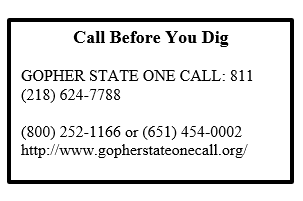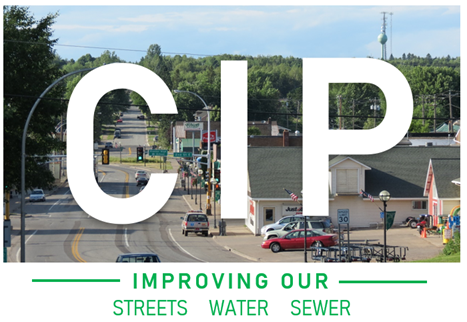Street and Sewer Services
STREET MAINTENANCE
CALL FOR ROAD ISSUES
City of Proctor: (218) 624-3641
City of Duluth:(218) 730-5100
City of Hermantown:(218) 729-7441
St. Louis County:(218) 625-3800
State of MN DOT:(218) 725-2700/ 2022 Road Construction
SEWER SERVICES
On February 1, 2020 Proctor’s Sewer Lateral/Sump Pumps Ordinance went into affect. The ordinance requirements take affect only upon the sale of property.
The required form is two pages: Homeowner completes page one, and a plumber of the homeowner’s choosing completes page two and submits required information to the City. See below for the Ordinance, Time of Sale Inspection Form and Waiver Application.
♦ Time of Sale Sewer Lateral Inspection Form
♦ City of Proctor Waiver Application
Sewer Issues
- Call Proctor City Hall at (218) 624-3641
After Hours Call (218) 624-7788
Sewer Cleaning Map
⇒ City of Proctor – Jet Vac Cleaning Schedule
Stormwater Management
The City of Proctor holds an annual Storm Water Management Meeting as part of the Planning and Zoning meeting in the Proctor Community Center Council Chambers. Discussion topics will include the City’s Storm Water Pollution Prevention Program and the elimination of illicit discharges. Meeting Date and Time will be posted.
Inflow & Infiltration
Why is I & I a Problem? Extra water in the sewer system is a problem because: It takes up capacity in the sewer pipes and ends up at the regional wastewater treatment plants where it must be treated like sewage, resulting in higher treatment costs. Requires new and larger wastewater facilities to convey and treat larger volumes of flow, resulting in higher capital expenditures. I&I flows contribute to sewer system overflows into local homes and the region’s waterways, negatively impacting public health and the environment. We estimate that inflow and infiltration makes up 75 percent of peak flows during winter, and much of this comes from private property. Protecting the environment and decreasing wastewater treatment costs are the benefit of a regional I&I control program. Impacts of peak I&I on wastewater flows While there are multiple reasons why portions of the conveyance system are at or near capacity, a major contributing factor is the capacity taken up by I&I flows in the system. Several capacity related capital improvements are needed in the regional system that are directly related to excessive I&I entering the system upstream of the needed improvements. The following figure demonstrates how peak I&I flows can far exceed base flows. I&I that enters the collection and treatment system also triggers higher operating costs for the region. Operating costs for conveyance facilities such as pump stations are proportional to flow volumes passing through the facilities. I&I also increases treatment costs because more chemicals and electricity are used during peak flows at the treatment plants. At Home – You CAN Make a Difference! Fats, oils and grease (FOG) materials often enter your home’s sewer pipes in liquid form, usually in the kitchen sink. The FOG separates and floats on the water in the pipe, solidifying as it cools down. These materials can coat the sewer pipe walls and build up over time. By placing your cooled and solidified cooking fats in a container instead of the drain, you protect your pipes and ultimately your home from a potentially damaging clog. This holds just as true for septic users as for those connected to the sewer. Clogs create sewage overflow and back-ups, threatening the health of your family and the environment. Put your grease in a container and discard solidified contents in your trash can. Other greasy dilemmas at home include large amounts of waste cooking oils. These wastes also do not belong down the drain, but they pose a more difficult disposal problem because they are liquid. Don’t place liquids in the trash, but instead use it again or bring it to WLSSD’s Household Hazardous Waste facility at 27th Avenue West and the waterfront for free disposal. Edible oil recyclers use this product, called “yellow grease”, to make products ranging from bio-fuels to pet and livestock feed additives. If you aren’t able to make it to the recycle bin, mix liquid edible oils with unscented kitty litter or sand to create a solid, and the place the mix in a plastic bag and put in your trash can. Sewer overflows from FOG clogs are entirely preventable. Be part of the solution, and think before you put it in the sink! Proper commercial Fats, Oils, and Grease handling is much the same as residential handling, with few additional requirements. Proctor requires businesses which handle these items to have properly installed grease interceptors, and additionally suggests that businesses follow the DO’s and DON’Ts in the Grease FAQ. The Guide To Grease Interceptors from the Plumbing and Drainage Institute explains grease interceptors in more detail. (File hosted with their permission). For additional information, please see pdionline.org.
⇒ Capital Improvement Plan





